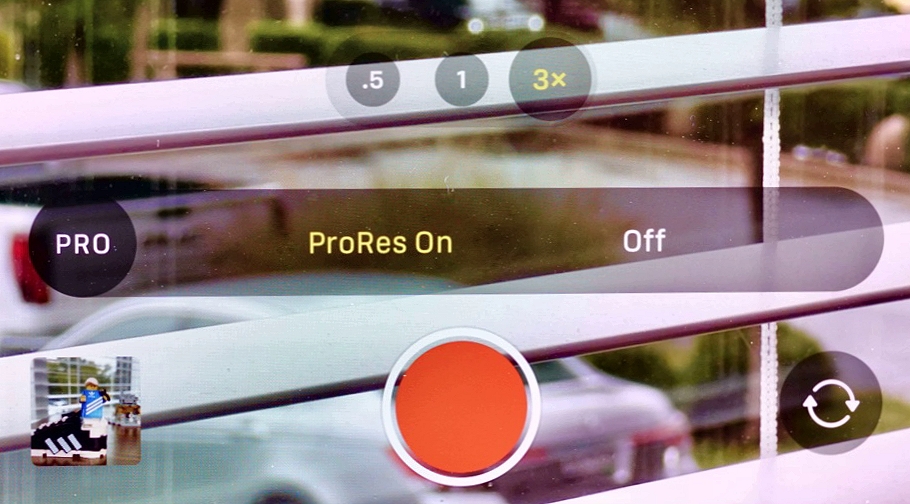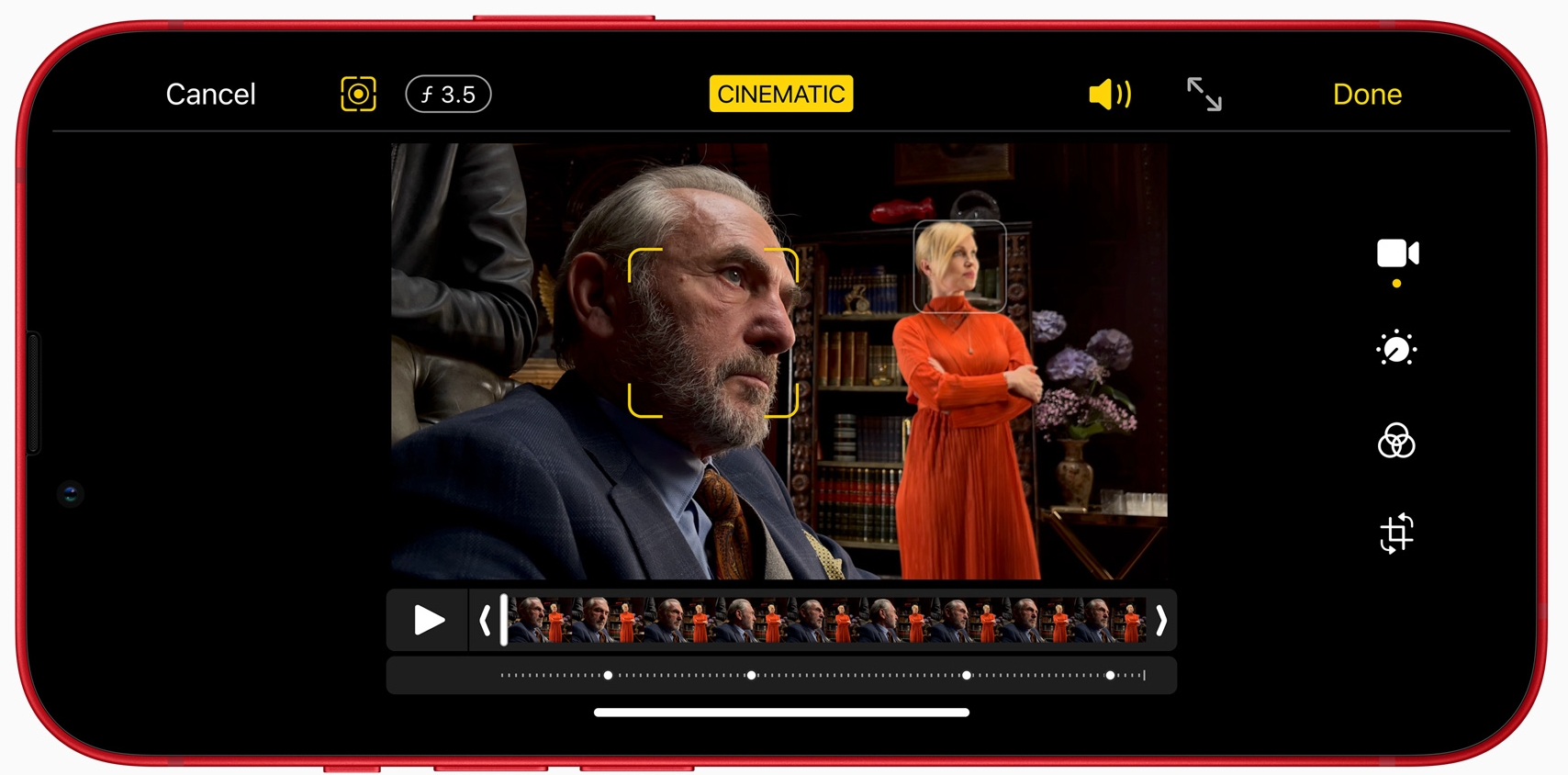iPhone ProRes Video Is Another Video Production Milestone
Multistream, real-time editing performance delivers professional image quality

In the 45 years since the introduction of the first portable broadcast camera—the mammoth RCA TK76—we’ve been on a constant roller coaster ride of new video technology. A succession of cameras has gotten smaller, less expensive and gained remarkably improved image quality.
Higher Quality, More Data
This year, there’s another video milestone: ProRes on Apple’s latest iPhone 13 Pro smartphone. ProRes enables multistream, real-time editing performance of iPhone video while delivering professional image quality. Apple’s ProRes is a lossy video compression format for use in post production that supports video resolution up to 8K. Much like the H.26x and MPEG standards, the ProRes family of codecs use compression algorithms based on the discrete cosine transform (DCT).
However, ProRes video files have a lower amount of compression compared to the more common codecs currently used on smartphones. ProRes also protects the image quality of the video while allowing for fast encoding and decoding. ProRes takes advantage of multicore processing and does decoding in a fast, reduced-resolution way. All ProRes codecs support any frame size (including SD, HD, 2K, 4K, 5K and up) at full resolution. Data rates are determined by codec type, image content, frame size and frame rate.
As a variable bit rate (VBR) codec technology, ProRes uses fewer bits on simple frames that would not benefit from encoding at a higher data rate. All ProRes codecs are frame-independent (or “intra-frame”), meaning that each frame is encoded and decoded independently of any other frame.
The benefit of an intermediate codec is that it offers excellent random-access performance in post-production applications. And it retains higher quality than end-user codecs while still requiring much more data storage compared to uncompressed video.
Intermediate codecs are widely used as a final format delivery method for HD broadcast files in commercials, features, Blu-ray and streaming. ProRes is limited for use during video editing and post and is not for practical end-user viewing.
ProRes is a DCT scalar-based intra-frame-only codec and is simpler to decode than distribution-oriented formats like H.264.
The professional video industry's #1 source for news, trends and product and tech information. Sign up below.

Of course, there is always a downside to new technologies. In this case ProRes files are up to 30 times larger than HEVC files. ProRes 422 HQ—the highest image quality shooting mode on the iPhone 13 Pro—eats up 92 MBps. That means one minute of shooting will use about 5.5 GB of storage. This is a reason for Apple’s new 1 TB memory option on the iPhone 13 Pro’s storage memory.
Needless to say, with this high data rate, if the files are stored on the iPhone itself, users will run out of storage space very quickly. Even if iCloud is used to store images, the capacity of the plan might need to be increased at extra cost to handle the extra load.
Cinematic Mode
The iPhone’s Camera app will free resources automatically when ProRes is enabled. But remember, the Camera app offers less than five minutes of ProRes recording time. Freeing resources will clear temporary system or app data that might be stored on the iPhone. It doesn’t permanently delete unrecoverable data but might require some apps to refresh data when they’re used again.

To add ProRes to an iPhone is a very big deal, since it allows a level of creative video production never before available on such a small and inexpensive consumer device. Apple’s support for ProRes is coupled with a major camera upgrade that offers improved lenses and far better low-light image quality.
The iPhone 13 also introduces Cinematic Mode, a new technology that uses Dolby Vision HDR and a technique called “rack focus” to shift the focus from one subject to another when shooting video. It does this by locking the focus on the subject in a scene and blurring the background to achieve depth of field. The downside is you can’t use ProRes with Cinematic mode, slo-mo or time-lapse video on the iPhone 13 Pro.
ProRes gives videographers many more creative options in post production. Last month, Apple released iOS 15.1, which included the addition of ProRes in the native Camera app. This came weeks after Filmic Pro, the popular professional iPhone cinematic video app, added the capability to record ProRes videos to its own software.
ProRes, for which Apple received an Emmy Engineering Award in 2020, is especially useful for people who color grade or use editing software like Final Cut Pro X or Adobe Premiere Pro.
The iPhone 13 Pro and 13 Pro Max are the first smartphones to support the Apple ProRes video codec for recording and editing. This can also be done on Apple’s new iPad Mini, which offers a slightly larger, more edit-friendly screen. Other models of ProRes-friendly devices are soon to follow. The popular iOS editing app Luma Fusion just announced support for ProRes video.
We are quickly moving from a time when everyone has a video smartphone in their pocket to a time when everyone has a truly professional quality imaging device in their pocket. The possibilities for this new level of television technology are endless—limited only by the human imagination. l
Frank Beacham is an independent writer based in New York.

